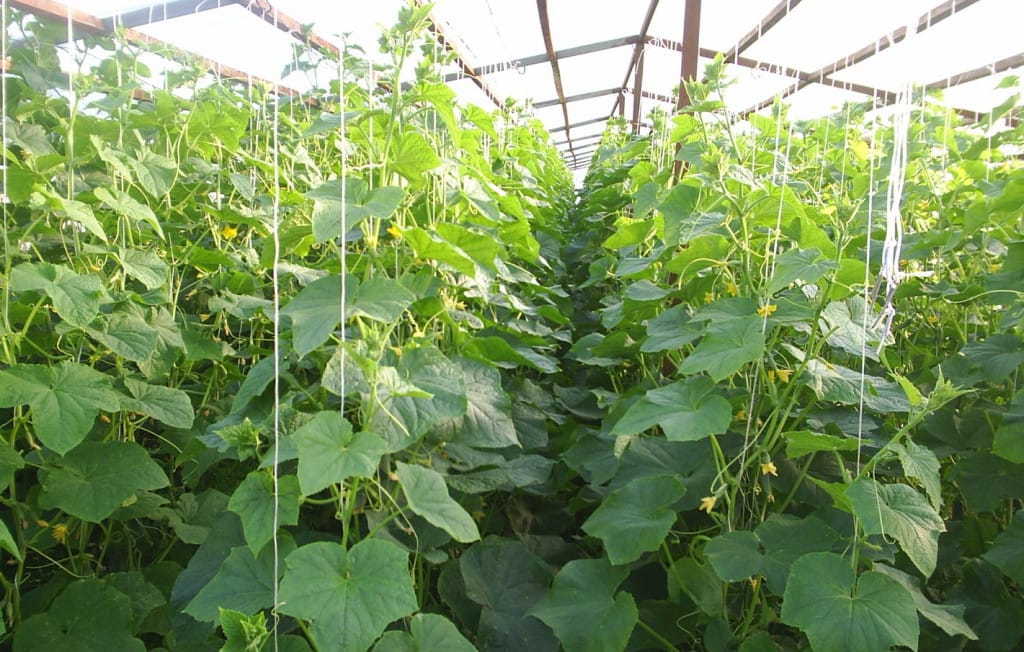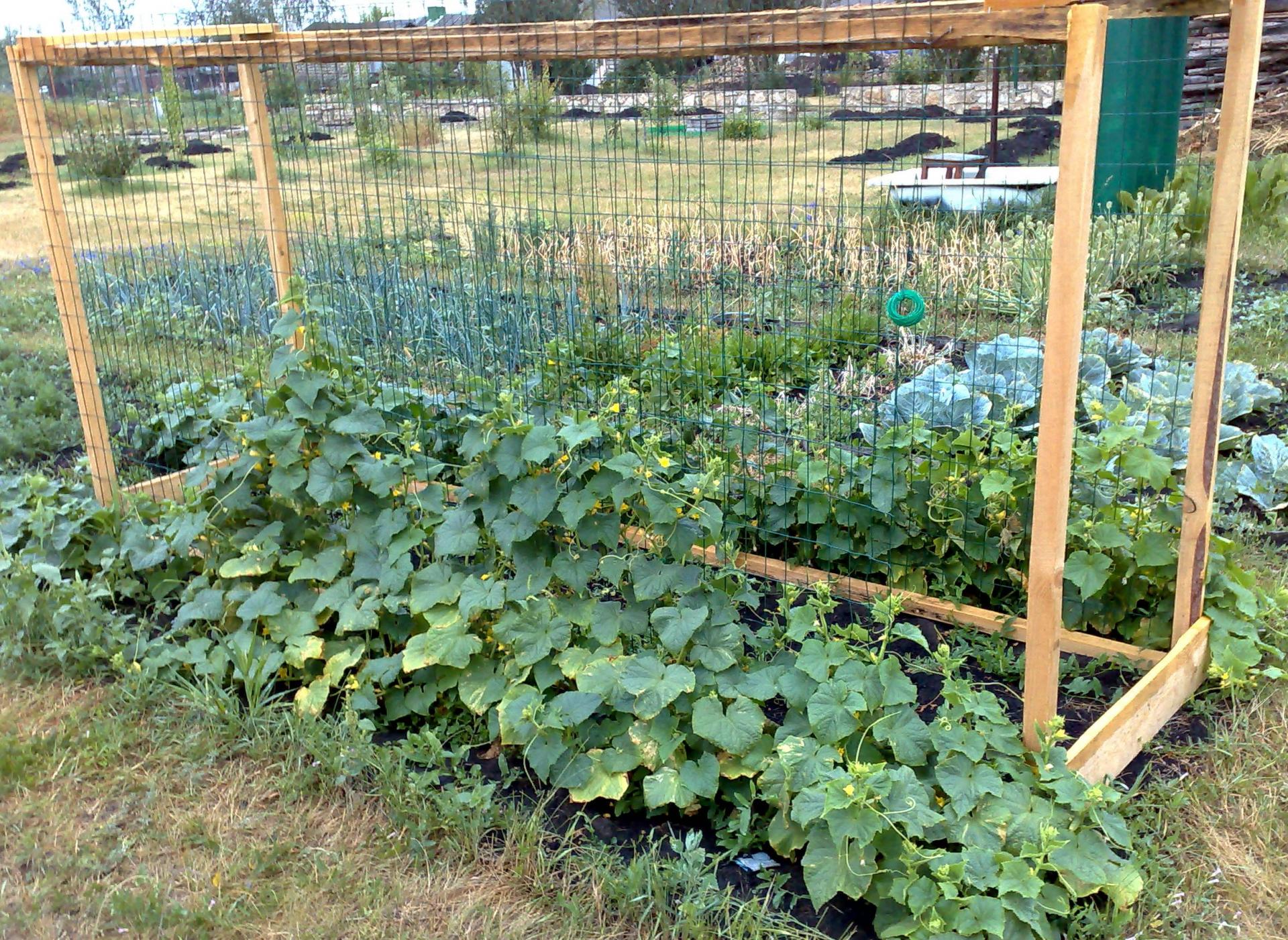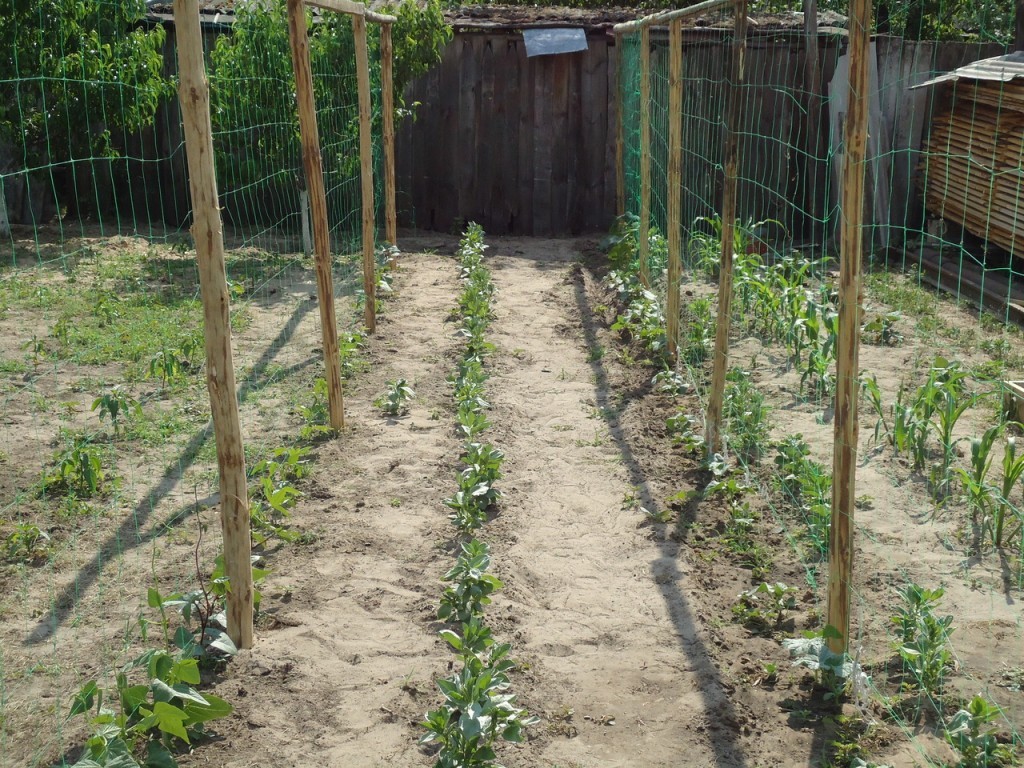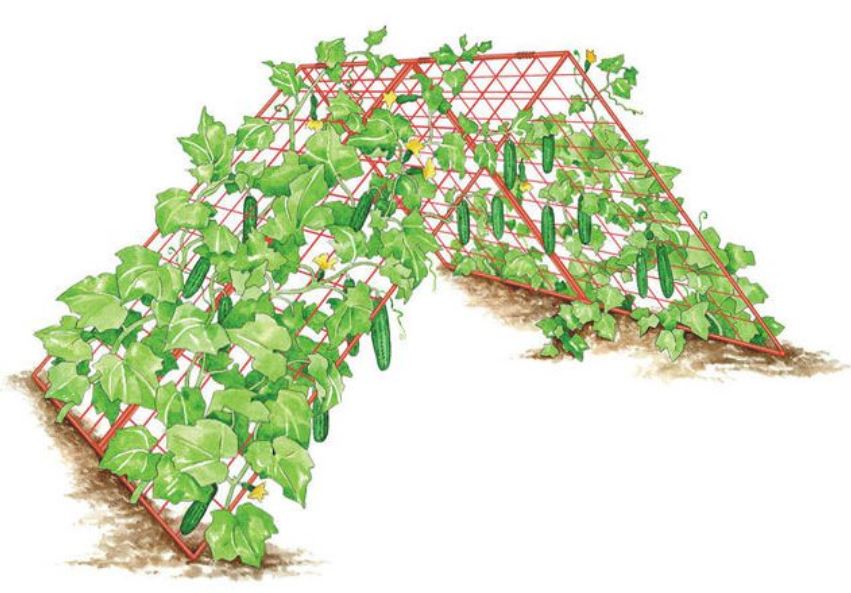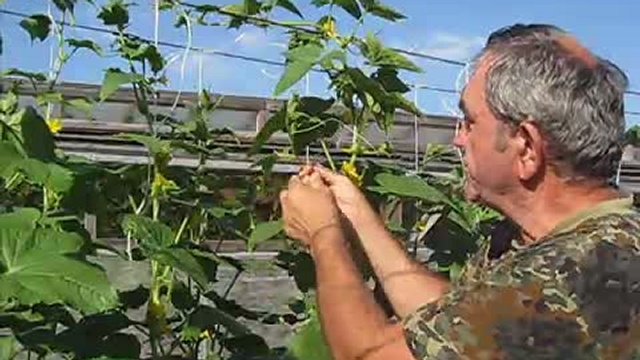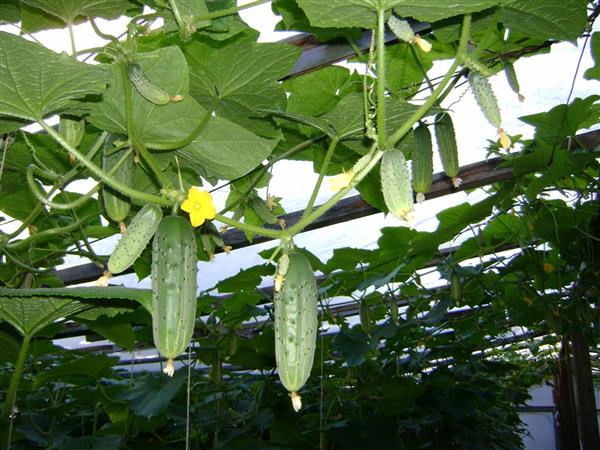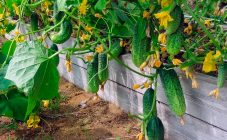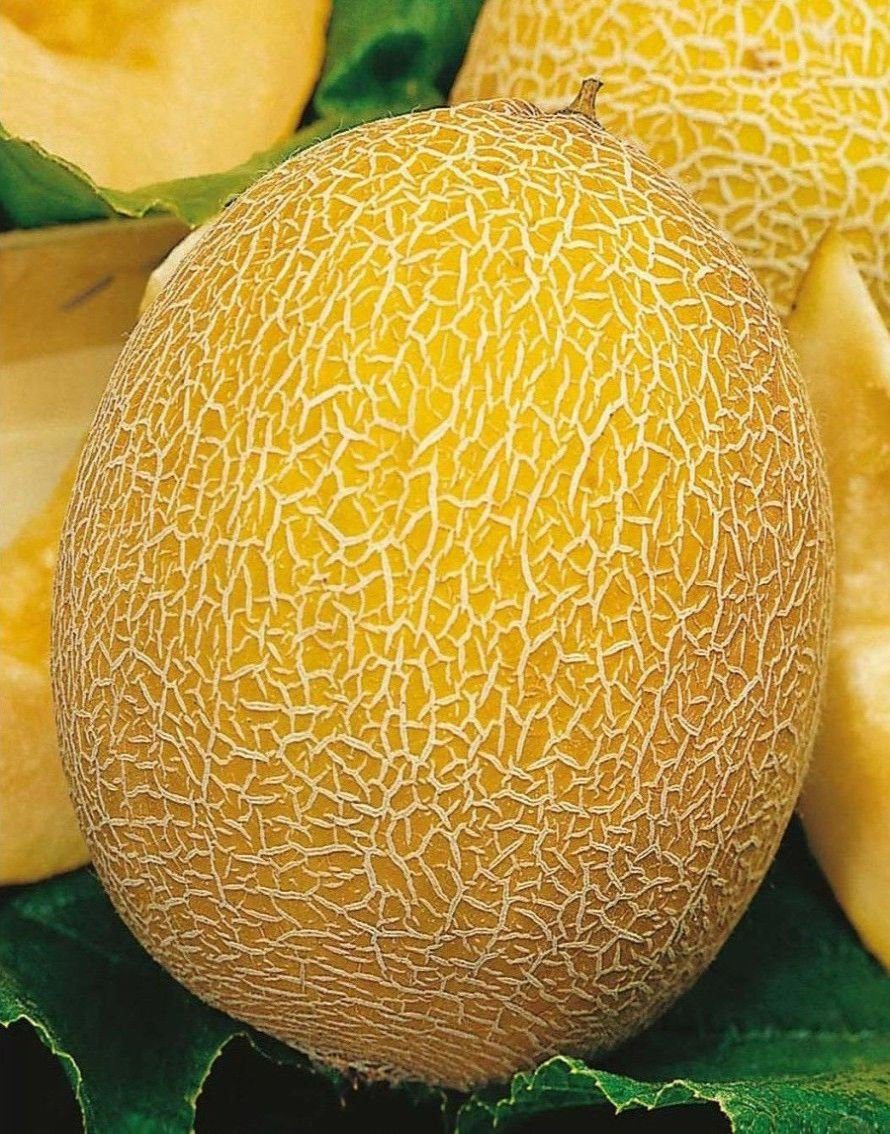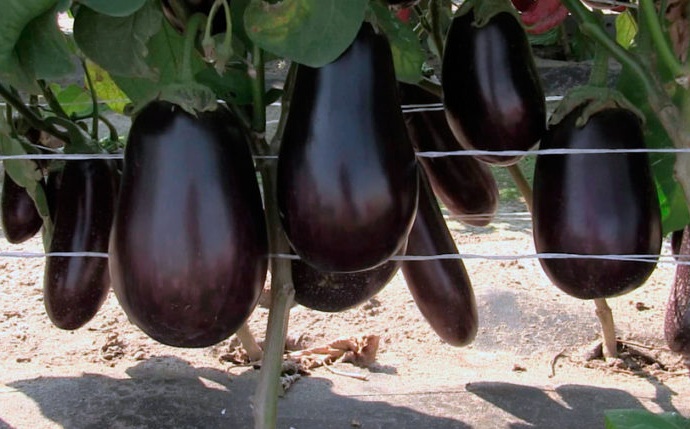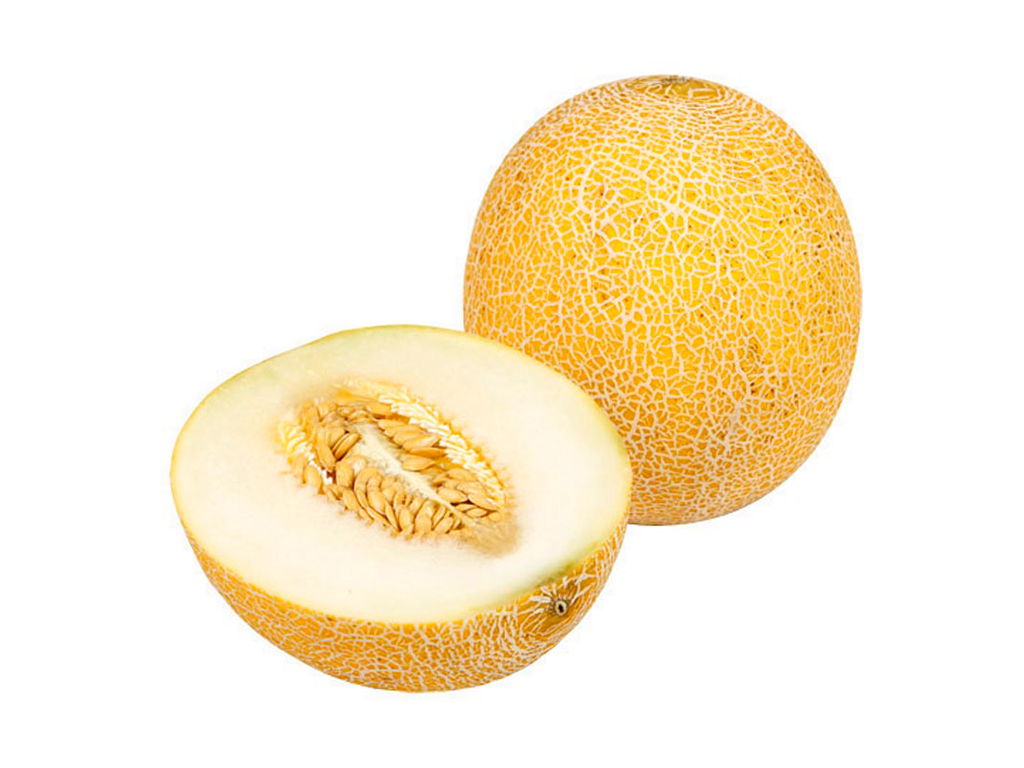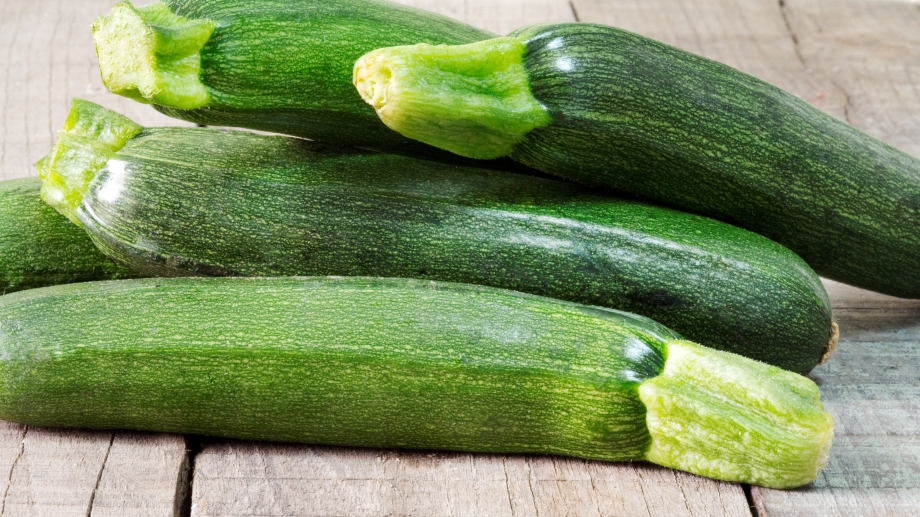Content:
It is impossible to imagine a summer cottage without cucumbers. But to get a good harvest, especially during the short, short cool summer, you need to try very hard. Growing cucumbers on a trellis in the open field is one of the most effective ways to achieve results.
Benefits of growing cucumbers on a trellis
First of all, a cucumber grown on a support is initially protected from many diseases inherent in the culture, the most common of which is powdery mildew. The fungus and various harmful insects that infect the leaves and fruits of the plant get on them, as a rule, from the soil on which they grow.
In addition, growing cucumbers on a trellis has a number of undeniable advantages over the traditional method:
- significant space savings;
- an increase in the fruiting period;
- ease of care;
- reduction in crop loss caused by fruit contact with the ground;
- facilitating the harvesting process.
The tapestry technology has found its application both on an industrial scale and in small garden areas.
How to make a trellis correctly
A good option for using the trellis method of growing cucumbers is to build a structure with your own hands, as this will not only save space on the site, but also greatly decorate the garden.
You can make a trellis from metal, plastic and other materials at hand. The design can be very diverse:
- in the form of a rectangle or square;
- patterned;
- stepped;
- openwork;
- in the form of a curbstone or a tent.
But you never know ways to form a trellis so that it decorates the site, and the garden looks more impressive.
The most common material for making trellis is wood. Even the most ordinary wooden frame with stretched wire makes the growing process much easier. A lattice made of wooden beams can be easily knocked down with nails. But still it is much more reliable to use self-tapping screws as a fastening material.
Structural supports can be made of metal tubes or cement pillars. The grid can be:
- intertwined rope;
- metal wire;
- hemp twine;
- special plastic.
Planting cucumbers with a trellis growing method
On a personal plot with a trellis method of cultivation, cucumbers, as a rule, are planted in one or two lines.
A one-line planting scheme assumes a bed 70-80 cm wide. The distance between the beds should be at least 50 cm. The distance between the lines is about 120 cm. The distance between plants in a row will depend on the type of cucumber. For weakly branching varieties, 15-20 cm is enough, for varieties with large branching it should be at least 25 cm.
With a two-row planting, the width of the bed increases from 110 to 220 cm.The distance between the rows is about 50 cm.From the edge of the bed, the rows are located at a distance of 20-30 cm. Thus, the rows are at a distance of 50-70 cm. The distance between plants in a row for low-branching varieties is from 25 to 30 cm, for highly branching - from 35 to 45 cm.
As with traditional cultivation, the seeds can be prepared by yourself or purchased from the store. It is better to lay them in 2-3 pieces. in each hole. The depth of the hole depends on the condition of the soil, but should not exceed 5 cm.
To bring the date of the first harvest of fruits closer, you can use the seedling method. Saplings with two or three true developed leaves can be planted in open ground.
Features of caring for cucumbers on a trellis
The probability of night frosts in the middle and northern latitudes persists until mid-June. To avoid damage to the young growth, it is advisable to install a simple protective structure over the cucumber bed. Usually the shelter consists of metal arcs, and agrofibre, polycarbonate or polyethylene is used as a covering material.
For the technology of vertical cultivation of cucumber, irrigation is just as important an element of care as in the creeping method. In the greenhouse, cucumbers are usually watered in the morning, in the open field - in the evening. To avoid damage to the roots and soil structure, spray cans are used for irrigation. Water should be poured directly under the root without wetting the top of the plant.
When watering, you need to adhere to approximately the following indicators:
| Vegetation period | Watering | Water volume, l per 1 m² | Watering frequency |
| Before flowering | Moderate | 3–6 | Once a week |
| Flowering, ovary formation and fruiting | Abundant | 6–12 | Two times per week |
Fertilizers for trellis cultivation are applied with the same regularity as in traditional cultivation: the first feeding is at the beginning of flowering; the rest are made every 2 weeks. As a result, 5-6 dressings are obtained per season.
The tapestry technology with equal success allows cultivating both beam (self-pollinated) hybrids and those varieties for which insects are needed for pollination.
Tying a cucumber lash to a trellis
Without a garter, cucumbers are not able to release long shoots, therefore, it is unlikely that it will be possible to grow a good harvest without it. Scourges quickly thicken and then rot and dry out. The fruits quickly lose their presentation.
There are several ways to tie a cucumber to a trellis.
Vertical garter
Synthetic twine is most often used to tie a cucumber lash to the top of the trellis. The twine can be replaced with another material at hand, as long as it meets the following requirements:
- did not absorb moisture;
- was strong and elastic enough;
- did not injure the stem.
This procedure should be started after the stem has grown by about 30 cm. Usually at this time 4-5 leaves are formed on the shoot. The bush is tied under the bottom sheet. The harness is best tied to the trellis using a sliding knot, as it allows you to adjust the length of the twine as the lash grows.
Horizontal garter
This garter differs from the vertical method in that a strong twine or rope is stretched between the two extreme supports in several rows. The distance between the rows is about 25 cm. The lash is first tied to the lowest row, and then, as it grows, to the higher rows.
Garter net for cucumbers
For trellises, you can use nets specially made for spreading plants. They successfully replace both vertical and horizontal garters and allow the lash to be freely woven into the mesh of the mesh. The use of a grid gives a great boost to the gardener's imagination. It can be simply pulled between two supports, placed on the garden bed in the form of a rectangle or triangle, or placed on the site in some other way.
How to form a bush on a trellis
After the first tying of the lash, the further algorithm for the formation of cucumbers in the open field on trellis includes the following stages:
- Pinching of flowers or shoots in the axils of the first 4 leaves. The fifth and sixth lateral shoots located above remain. Then their tops are pinched, keeping 15-20 cm of the length of each branch.
- Further along the main stem, shoots with a length of 30-40 cm are left, the tops of which are also pinched.
- At the top of the trellis, where the bush is tied up, side shoots about 50 cm long are carefully fixed.
- The main shoot is thrown over the trellis (upper support), and when the whip grows another 60-70 cm, pinch its top.
The cucumbers growing on the trellis hang down. Thanks to this position, the fruit remains straight, evenly colored and clean.
Growing cucumbers in a tapestry way is a rather troublesome task that requires a lot of labor and time from the gardener. However, this single drawback is more than offset by the advantages of this cultivation method.
